Space Gardening 101
Space Gardening 101
You can’t escape eating (or gardening!) your vegetables, even if you’re in space. On Aug. 10, astronauts on the International Space Station sampled their first space grown salad. This freshly harvest red romaine lettuce was grown in the “Veggie” plant growth chamber that is designed to make gardens flourish in weightlessness.
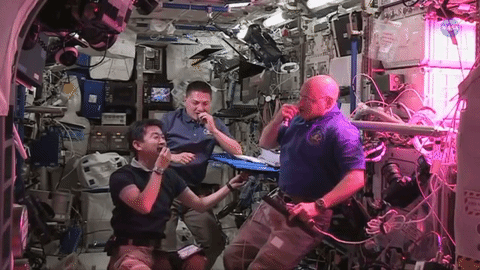
In a weightless environment, there is no up and down, so roots grow in all directions. Water and soil, the materials used to anchor these plants and allow for root growth tend to float away.
How Do We Grow Plants in Space?
1. Plant Pillows
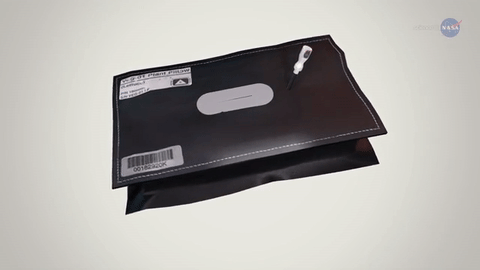
The Veggie chamber helps solve the problems of a weightless environment by using ‘plant pillows’, sounds comfy right? These pillows are bags filled with material for growing plants in space.
2. Wicks

Wicks are implanted into the bags and are used to draw water from inside the pillow to the plant.
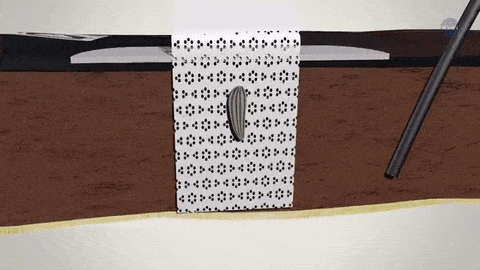
These wicks also provide a place to glue the seeds. It’s important to orient the seeds so roots will grow ‘down’, and shoots that emerge will push out of the bag.
3. LED Lights
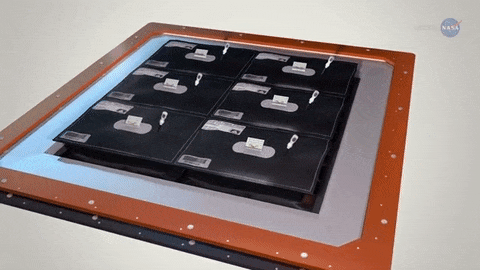
LED lights are used for photosynthesis and give the shoots a sense of direction so they keep growing upward. The walls of the Veggie chamber can expand to make room for the plant as it grows.
The purple/pinkish hue surrounding the plants in Veggie is the result of a combination of the red and blue lights, which is what the plants need to grow. Green LEDS were added so the plants look like edible food rather than weird purple plants.
Why are we growing plants in space?
When astronauts travel on deep space missions, like Mars, they will need to be self-sufficient for long periods of time. Having the ability to grow their own food is a big step in that direction. There is also a desire to grow flowering vegetables in space, which is why we are currently tending to zinnia flowers on orbit. Growing these flowering plants will help us understand longer duration growing plants that have to flower in space, such as tomatoes.
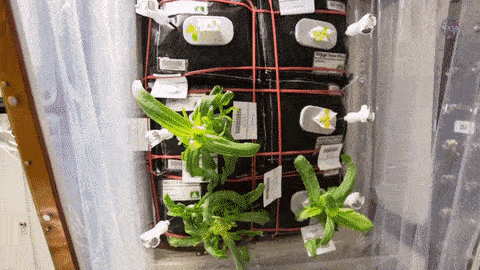
What’s Next? The next SpaceX delivery will include seeds for a small cabbage and additional red romaine lettuce. Upcoming experiments will use various ratios of red and blue lights and different fertilizers in attempts to improve crop yield, nutrition and flavor. The findings from these experiments can be utilized both on Earth and in space.
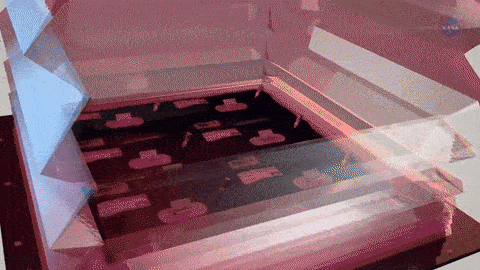
In addition to the nutrition benefits of growing vegetables in space, the psychological benefits are also significant. Having living plants can help with stress and increase the crews’ enjoyment. It provides the sights, smells and tastes of Earth.
To learn more about gardening in space, watch ScienceCast HERE.
Make sure to follow us on Tumblr for your regular dose of space: http://nasa.tumblr.com
More Posts from I-lik3-giants and Others
male moans (source)








Space Photos of the Week
i miss her



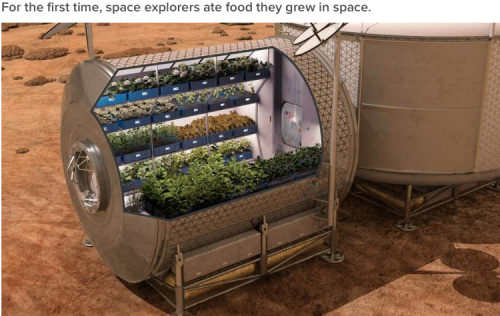


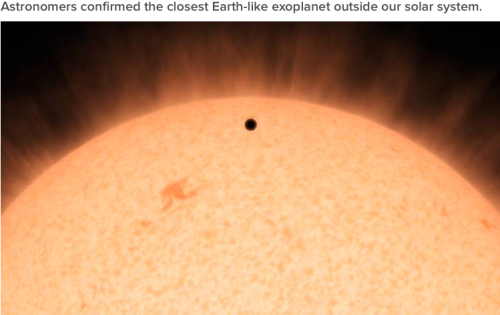


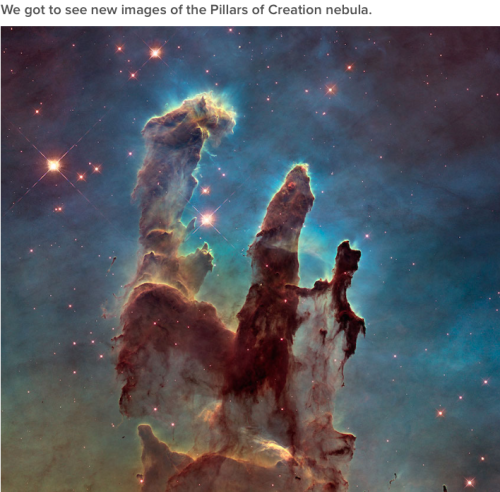
If you couldn’t tell already, NASA is having a great year. From Pluto to food grown in space, even in the face of budget cuts, the nation’s space agency had some stellar highlights. Most mysteriously of all, a spacecraft found two eerily bright lights on a distant dwarf planet.

The Shakespearean Moons of Uranus
This weekend marks the 400th anniversary of Shakespeare’s death, and we’re highlighting the moons of Uranus; some of which are named after characters from his works.

While most of the moons orbiting other planets take their names from Greek mythology, Uranus’ moons are unique in bing named for Shakespearean characters, along with a couple of them being named for characters from the works of Alexander Pope.

Using the Hubble Space Telescope and improved ground-based telescopes, astronomers have discovered a total of 27 known moons around Uranus.
Here’s a sampling of some of the unique aspects of the moons:
Miranda

Shakespearean work: The Tempest
Miranda, the innermost and smallest of the five major satellites, has a surface unlike any other moon that’s been seen. It has a giant fault canyon as much as 12 times as deep as the Grand Canyon, terraced layers and surfaces that appear very old, and others that look much younger.
Ariel

Shakespearean work: The Tempest
Ariel has the brightest and possibly the youngest surface among all the moons of Uranus. It has a few large craters and many small ones, indicating that fairly recent low-impact collisions wiped out the large craters that would have been left by much earlier, bigger strikes. Intersecting valleys pitted with craters scars its surface.
Oberon

Shakespearean work: A Midsummer Night’s Dream
Oberon, the outermost of the five major moons, is old, heavily cratered and shows little signs of internal activity. Unidentified dark material appears on the floors of many of its craters.
Cordelia and Ophelia

Shakespearean works: Cordelia - King Lear; Ophelia - Hamlet
Cordelia and Ophelia are shepherd moons that keep Uranus’ thin, outermost “epsilon” ring well defined.
Between them and miranda is a swarm of eight small satellites unlike any other system of planetary moons. This region is so crowded that astronomers don’t yet understand how the little moons have managed to avoid crashing into each other. They may be shepherds for the planet’s 10 narrow rings, and scientists think there must be still more moons, interior to any known, to confine the edges of the inner rings.
Want to learn more about all of Uranus’s moons? Visit: http://solarsystem.nasa.gov/planets/uranus/moons
Check out THIS blog from our Chief Scientist Ellen Stofan, where she reflects on the life and legacy of William Shakespeare on the 400th anniversary of his death on April 23, 1616.
Make sure to follow us on Tumblr for your regular dose of space: http://nasa.tumblr.com

Sarah Silverman
guy moans
'Let's lie very still and quiet and hold each other and not think at all.'
Ernest Hemingway, The Garden of Eden (via klytemnestre)
What’s Up for November?

November weather can be challenging for backyard astronomers, but the moon is a reliable target, even when there are clouds.
Did you know that the moon takes about 29 days to go around the Earth once? It also takes the moon about 29 days to spin on its axis. This causes the same side of the moon to always face Earth.

On Nov. 3, the moon reaches last quarter when it rises at midnight and sets at noon. This is a great time to see the moon in the morning sky.

On Nov. 11, the new moon isn’t visible, because it’s between Earth and the sun, and the unlit side faces Earth. In the days after the new moon, the slender crescent gets bigger and brighter. Look just after sunset on Nov. 13 and 14 near the setting sun in the western sky.

The next phase on Nov. 19 is called the first quarter, because the moon has traveled one quarter of its 29-day orbit around Earth. The moon rises at noon and sets at midnight, so you can see it in the afternoon sky. It will rise higher in the sky after dark. That’s when you can look for the areas where four of the six Apollo missions landed on the moon! You won’t see the landers, flag or footprints, but it’s fun and easy to see these historic places with your own eyes or with binoculars.

To see the area: Look for three dark, smooth maria, or seas. The middle one is the Sea of Tranquility. Apollo 11 landed very near a bright crater on the edge of this mare in 1969. The Apollo 15, 16 and 17 landing areas form the points of a triangle above and below the Apollo 11 site.

On Nov. 25, you can see the full moon phase, which occurs on the 14th day of the lunar cycle. The moon will rise at sunset and will be visible all night long, setting at sunrise.

On Thanksgiving (Nov. 26), the 15-day-old moon will rise an hour after sunset. You may even see some interesting features! And this is a great time to see the impact rays of some of the larger craters.

Make sure to follow us on Tumblr for your regular dose of space: http://nasa.tumblr.com
-
 umbradactyl liked this · 1 year ago
umbradactyl liked this · 1 year ago -
 snailswithwings liked this · 1 year ago
snailswithwings liked this · 1 year ago -
 lilc00 liked this · 4 years ago
lilc00 liked this · 4 years ago -
 im-nike-1111 reblogged this · 4 years ago
im-nike-1111 reblogged this · 4 years ago -
 longago-once-3 liked this · 4 years ago
longago-once-3 liked this · 4 years ago -
 dubiousspectrum reblogged this · 4 years ago
dubiousspectrum reblogged this · 4 years ago -
 sothatidostuff reblogged this · 5 years ago
sothatidostuff reblogged this · 5 years ago -
 thethoughtsofcoke liked this · 5 years ago
thethoughtsofcoke liked this · 5 years ago -
 we-are-merelyplayers liked this · 5 years ago
we-are-merelyplayers liked this · 5 years ago -
 your-suppressed-memories liked this · 5 years ago
your-suppressed-memories liked this · 5 years ago -
 snowpea-rl liked this · 5 years ago
snowpea-rl liked this · 5 years ago -
 astrowrought reblogged this · 5 years ago
astrowrought reblogged this · 5 years ago -
 thefuturespaceman liked this · 5 years ago
thefuturespaceman liked this · 5 years ago -
 amichalap liked this · 6 years ago
amichalap liked this · 6 years ago -
 dataprincess reblogged this · 6 years ago
dataprincess reblogged this · 6 years ago -
 glxtter--prince liked this · 6 years ago
glxtter--prince liked this · 6 years ago -
 astro-biologist liked this · 6 years ago
astro-biologist liked this · 6 years ago -
 bribzeydragon liked this · 6 years ago
bribzeydragon liked this · 6 years ago -
 alittlebitofearth reblogged this · 7 years ago
alittlebitofearth reblogged this · 7 years ago -
 mellifluousangel liked this · 7 years ago
mellifluousangel liked this · 7 years ago -
 darlugal liked this · 7 years ago
darlugal liked this · 7 years ago -
 revyourharleyquinn liked this · 7 years ago
revyourharleyquinn liked this · 7 years ago -
 ledsmaster-blog liked this · 7 years ago
ledsmaster-blog liked this · 7 years ago -
 sammylunar liked this · 7 years ago
sammylunar liked this · 7 years ago -
 screambirdscreaming liked this · 7 years ago
screambirdscreaming liked this · 7 years ago -
 ookaookaooka liked this · 7 years ago
ookaookaooka liked this · 7 years ago -
 john349-blog liked this · 7 years ago
john349-blog liked this · 7 years ago -
 rose---child liked this · 7 years ago
rose---child liked this · 7 years ago -
 deepest-dope liked this · 7 years ago
deepest-dope liked this · 7 years ago -
 starscape-vi0 reblogged this · 7 years ago
starscape-vi0 reblogged this · 7 years ago -
 starsinmysky-buticantseethe-blog liked this · 7 years ago
starsinmysky-buticantseethe-blog liked this · 7 years ago -
 martiandaydreams reblogged this · 7 years ago
martiandaydreams reblogged this · 7 years ago -
 themidnighttemplars liked this · 7 years ago
themidnighttemplars liked this · 7 years ago